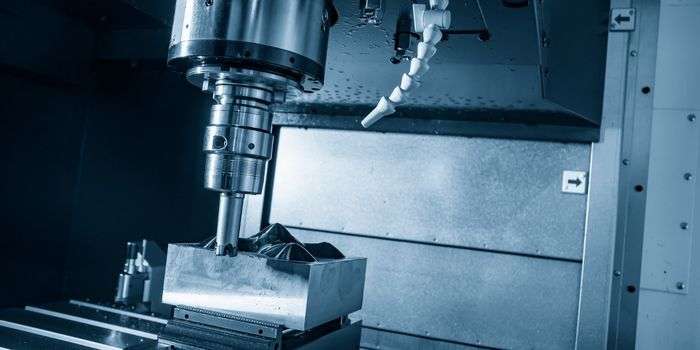
Aug 22,2023
Have you ever wondered how intricate metal or plastic components are created with the utmost precision? Enter the realm of CNC machines, where technology and craftsmanship merge to redefine manufacturing processes.
In this blog post, we'll take a deep dive into the fascinating world of Computer Numerical Control, demystify the functionalities of CNC machines, shed light on the significance of CNC parts, and explore their diverse applications across industries.
CNC machines, short for Computer Numerical Control machines, have revolutionized the manufacturing landscape. With the power of automation and computer programming, these marvels of engineering offer unmatched precision and efficiency. Let's explore the key aspects of CNC machines that make them a driving force in modern production.
At its core, a CNC machine is a computer-controlled device that utilizes precise instructions to manipulate machine tools. By programming the desired parameters, the computer guides the machine in executing intricate cutting operations, thereby producing components with exceptional accuracy.
CNC parts are the lifeblood of any CNC machine. Crafted from high-quality metals, these parts not only facilitate the smooth functioning of the machine but can also be replaced as needed. Let's delve deeper into the significance and role of CNC parts in the world of manufacturing.
CNC parts serve as integral components that enable the seamless operation of CNC machines. They are meticulously designed and manufactured to withstand the rigors of cutting materials with varying properties, such as metals, plastics, and wood.
Spindle: The spindle is a paramount component that imparts power to the cutting tool. It rotates at different speeds, allowing precise material removal for different types of materials and thicknesses.
Chuck: Acting as a vice, the chuck firmly holds the workpiece in place during the cutting process. By securely clamping the material onto the table surface, it enables rotational movement facilitated by the spindle.
Collet: The collet plays a crucial role in holding the cutting tool securely in position. It ensures the tool's stability by firmly gripping its shank using a wrench or screw, thereby guaranteeing accurate and controlled machining.
Now that we have a firm grasp of CNC machines and their vital parts let's take a closer look at the inner workings and capabilities of these precision powerhouses.
Among the various types of CNC machines, the 3-axis milling machine stands as a popular choice due to its versatility and efficiency.
This machine boasts three primary axes of motion: X, Y, and Z. Let's understand the significance of each axis and how they contribute to the cutting process.
The X-axis controls the horizontal movement of the cutting tool. It allows for precise positioning of the tool along the workpiece's length, enabling straight cuts and intricate contours.
The Y-axis governs the vertical movement of the cutting tool. By manipulating this axis, the machine can adjust the tool's height, facilitating the creation of depth and complex geometries.
The Z-axis controls the depth or thickness of the cut. It empowers the machine to precisely penetrate the material to the desired extent, ensuring accurate shaping and machining.
CNC machines have found widespread utilization across numerous industries, each harnessing their capabilities for diverse purposes. Let's explore some of the notable applications of CNC machines in today's manufacturing landscape.
In the aerospace sector, precision and reliability are paramount. CNC machines play a vital role in producing intricate components such as turbine blades, engine parts, and structural elements.
The exceptional accuracy and repeatability of CNC machines ensure the highest quality standards required for safe and efficient aerospace operations.
CNC machines have transformed the automobile manufacturing process, enabling the production of complex parts with unparalleled precision.
From engine components to body panels, CNC machines ensure consistent quality and dimensional accuracy, contributing to the overall reliability and performance of vehicles.
The medical industry demands precision and sterile environments. CNC machines assist in manufacturing medical devices, implants, and prosthetics, catering to individual patient requirements with remarkable accuracy.
This technology plays a crucial role in shaping the future of healthcare by enabling personalized and innovative solutions.
As we conclude our exploration of CNC machines, we are left in awe of the incredible precision and efficiency they bring to the world of manufacturing. From aerospace to automotive and medical industries, CNC machines continue to shape the future of production.
By harnessing the power of computer programming and automation, these marvels of engineering have redefined what's possible, enabling the creation of intricate components that drive progress in countless fields. So, the next time you encounter a beautifully crafted metal part or a precisely shaped plastic component, remember the unsung hero behind it all—the CNC machine.
To provide a comprehensive understanding of CNC machines and address common queries, here are some frequently asked questions:
A1: CNC machines offer superior precision and automation compared to traditional methods, allowing for complex geometries, higher efficiency, and consistency in output.
A2: Absolutely! CNC machines are versatile and can efficiently handle materials like plastics, wood, composites, and even ceramics.
A3: Yes, CNC machines are available in various sizes and configurations, catering to businesses of all scales. They offer cost-effective solutions and can significantly enhance productivity.